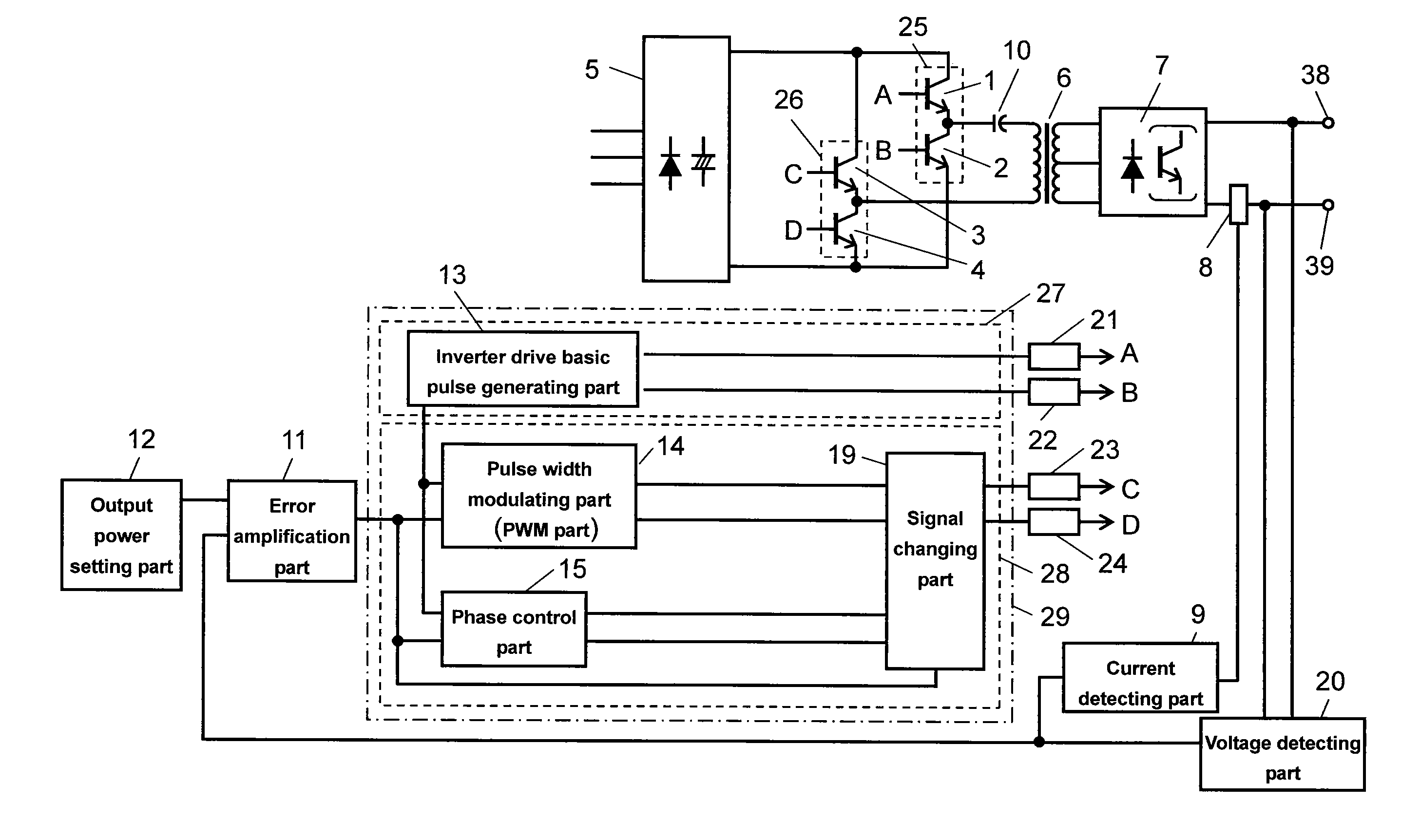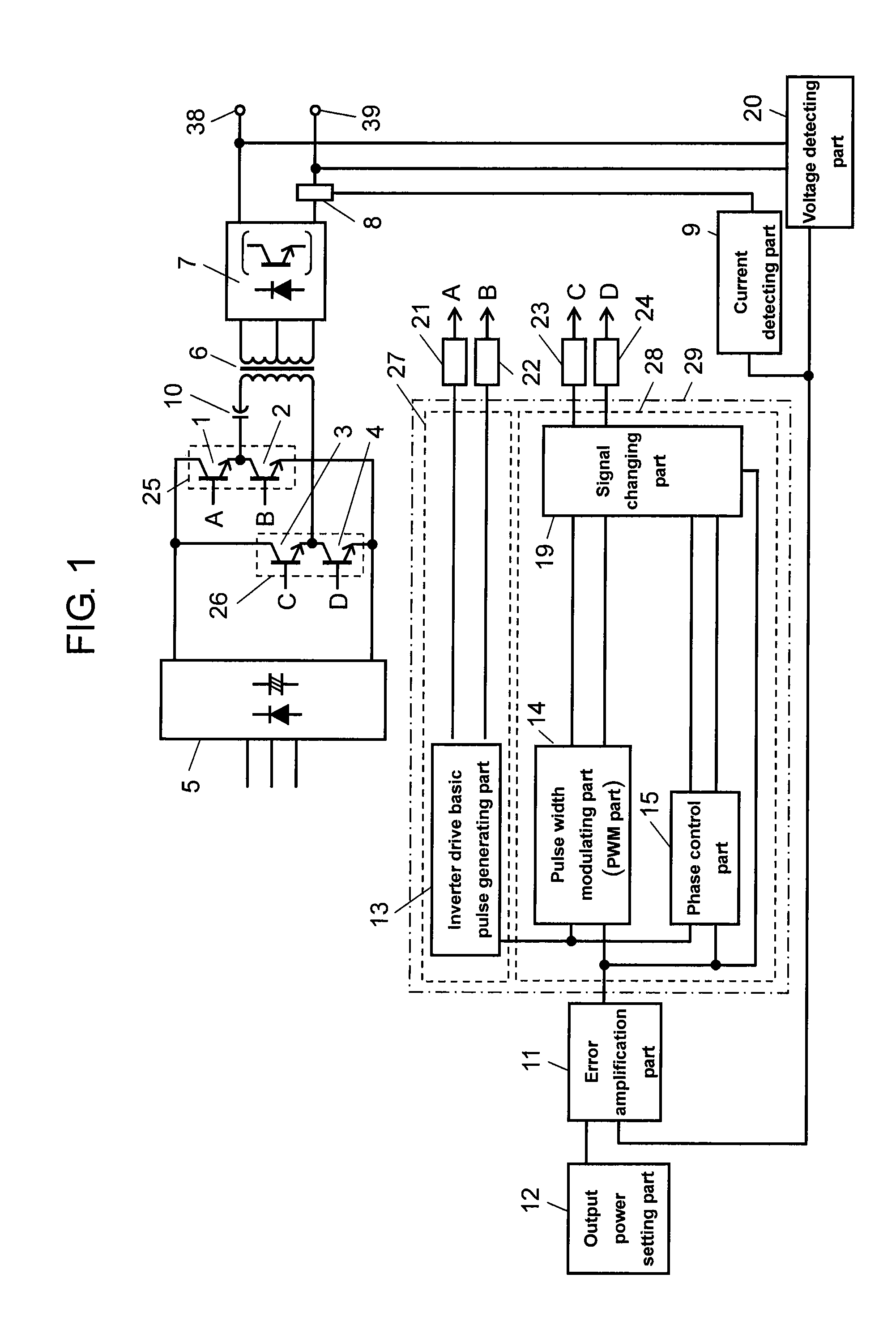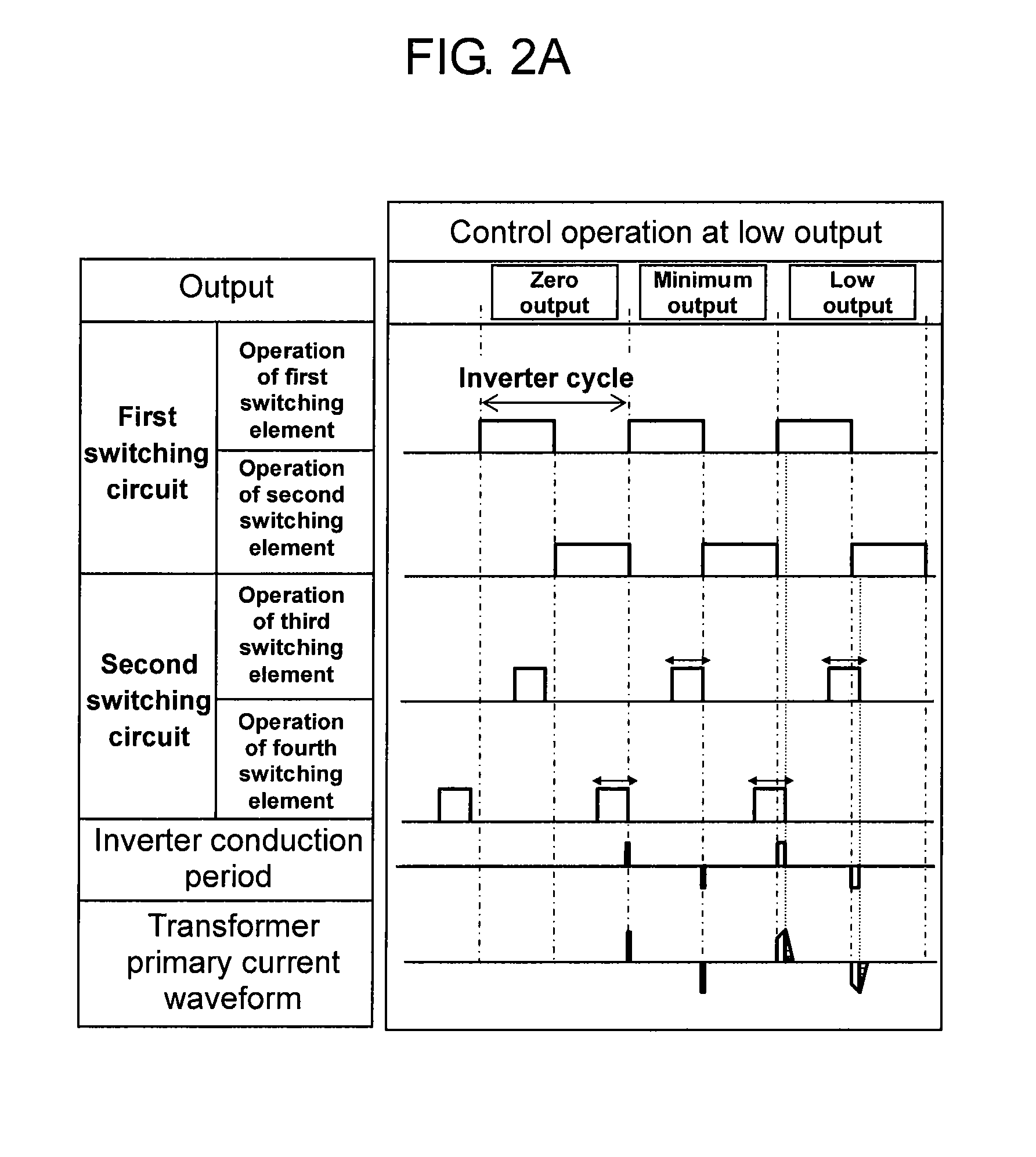Inverter control device and inverter control method
a technology of inverter control and control method, which is applied in the direction of electric variable regulation, process and machine control, instruments, etc., can solve the problems of transformer current not flowing, transformer current becoming unstable, regeneration diodes of switching elements to generate more heat, etc., to suppress the heat generation of switching elements, control well and accurately, and suppress the effect of switching element heat generation
- Summary
- Abstract
- Description
- Claims
- Application Information
AI Technical Summary
Benefits of technology
Problems solved by technology
Method used
Image
Examples
first exemplary embodiment
[0108]A description is made of an arc welding machine using an inverter control device according to the first exemplary embodiment using FIG. 1 and FIGS. 2A through 2C. FIG. 1 shows an outline structure of substantial parts of the arc welding machine. FIGS. 2A through 2C are schematic diagrams showing operation of the components of the arc welding machine. FIGS. 2A through 2C illustrate operation of the arc welding machine, specifically operation of a switching element, an inverter conduction period, and a waveform of a transformer primary current at low output (FIG. 2A), middle output (FIG. 2B), and high output (FIG. 2C) for welding.
[0109]Here, low, middle, and high output for welding are classified on the basis of the magnitude of an error amplification signal from error amplification part 11 (described later), for example. Specifically, if the magnitude is lower than a predetermined first threshold, the output is low; if between the predetermined first threshold and a predetermin...
second exemplary embodiment
[0142]A description is made of an arc welding machine including an inverter control device of the second exemplary embodiment using FIG. 3 and FIGS. 4A through 4C. FIG. 3 shows an outline structure of substantial parts of the inverter control device. FIGS. 4A through 4C illustrate operation of the inverter control device, specifically operation of a switching element, an inverter conduction period, and a waveform of a transformer primary current at low output (FIG. 4A), middle output (FIG. 4B), and high output (FIG. 4C) for welding.
[0143]In this embodiment, a component or portion same as that in the first embodiment is given the same reference mark to omit its detailed description.
[0144]The principal point different from the first embodiment is the configuration of inverter control part 29. Specifically, the second embodiment includes driving pulse width changing part 17 as described later. Further, signal changing part 19 outputs an output signal selectively from pulse-width modula...
third exemplary embodiment
[0176]A description is made of the inverter control device of an arc welding machine according to the third exemplary embodiment using FIGS. 5 through 7. FIG. 5 shows an outline structure of substantial parts of the inverter control device. FIGS. 6A through 6C schematically illustrate operation of the inverter control device, specifically operation of a switching element, an inverter conduction period, and a waveform of a transformer primary current at low output (FIG. 6A), middle output (FIG. 6B), and high output (FIG. 6C) for welding. FIGS. 7A and 7B illustrate inverter operation, showing changes in operating state. FIG. 7A shows the entire waveform for one cycle. FIG. 7B shows conduction states of the switching elements and operating states of a circuit current in the time areas indicated by T1 through T5 in FIG. 7A.
[0177]In FIG. 7A, part L1 surrounded by the solid-line oval indicates that switching loss is generated; and L2 surrounded by the broken-line oval, not generated.
[0178...
PUM
| Property | Measurement | Unit |
|---|---|---|
| frequency | aaaaa | aaaaa |
| charging current | aaaaa | aaaaa |
| output current | aaaaa | aaaaa |
Abstract
Description
Claims
Application Information
 Login to View More
Login to View More - R&D
- Intellectual Property
- Life Sciences
- Materials
- Tech Scout
- Unparalleled Data Quality
- Higher Quality Content
- 60% Fewer Hallucinations
Browse by: Latest US Patents, China's latest patents, Technical Efficacy Thesaurus, Application Domain, Technology Topic, Popular Technical Reports.
© 2025 PatSnap. All rights reserved.Legal|Privacy policy|Modern Slavery Act Transparency Statement|Sitemap|About US| Contact US: help@patsnap.com



